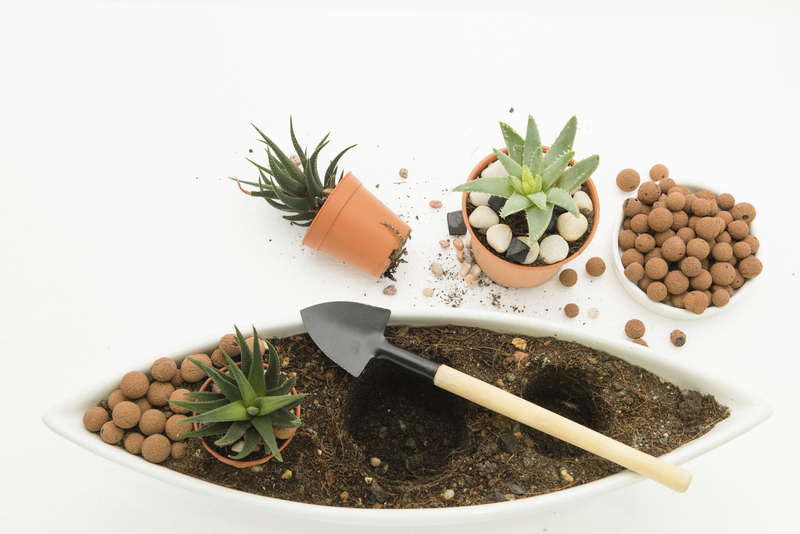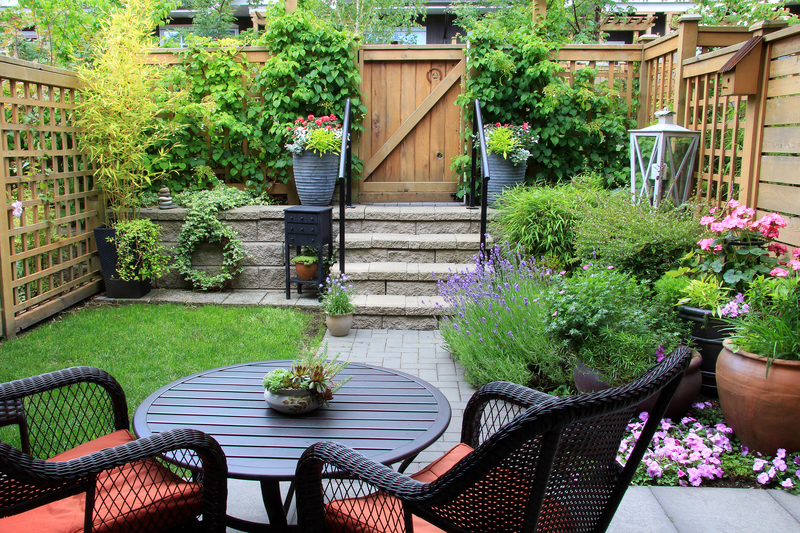Natural Screens and Living Walls to Protect Your Garden Privacy
In today's fast-paced world, our garden spaces have become sanctuaries where we relax, unwind, and connect with nature. Yet, with growing urbanization, safeguarding these private havens has become a priority for many homeowners. Natural screens and living walls are innovative and eco-friendly solutions to ensure your outdoor haven remains private, beautiful, and sustainable. This comprehensive guide explores the use of natural privacy screens and living green walls to protect your garden privacy, boost aesthetic appeal, and create a tranquil environment.

Why Opt for Natural Screens and Living Walls?
Choosing natural garden screens and living wall solutions over traditional fencing or hard barriers offers a multitude of benefits:
- Sustainability: Plants, shrubs, and green walls are environmentally friendly and contribute to local biodiversity.
- Beauty: Natural elements blend seamlessly with garden landscapes, creating a harmonious atmosphere.
- Air Quality: Living plant walls help purify the air and absorb pollutants.
- Noise Reduction: Dense vegetation can act as effective acoustic barriers, dampening unwanted sounds.
- Flexibility: You can customize natural screens for height, density, and color to suit your needs.
- Wildlife Habitat: Green screens provide shelter and food for birds, bees, and beneficial insects.
- Year-Round Appeal: With careful plant selection, natural screens can provide privacy throughout the seasons.
Types of Natural Screens for Garden Privacy
Natural screens come in many forms, from hedgerows and climbing plants to creative green walls. Let's explore the most popular options to enhance your garden privacy naturally.
1. Living Hedges
Hedges are perhaps the oldest and most traditional form of natural privacy screen. They're made by planting dense rows of shrubs or small trees, creating a lush, green barrier. Formal hedges are neatly trimmed for crisp lines, while informal hedges have a more relaxed, natural look.
Popular Hedge Plants:- Boxwood (Buxus): Classic, evergreen, and easy to shape.
- Yew (Taxus baccata): Dense, long-lived, and excellent for shaded spots.
- Privet (Ligustrum): Fast-growing and adaptable.
- Laurel (Prunus laurocerasus): Large glossy leaves and rapid coverage.
- Beech (Fagus sylvatica): Retains dried leaves through winter, offering year-round privacy.
2. Bamboo Screens
Bamboo is gaining popularity as a natural garden screen due to its rapid growth, evergreen nature, and striking appearance. Certain clumping bamboo varieties are best for privacy, as they're non-invasive and easy to manage.
Benefits of Bamboo as a Screen:- Height: Bamboo can reach impressive heights, perfect for screening upper-story windows.
- Density: Thick culms provide dense coverage and year-round foliage.
- Sound Barrier: The rustling leaves and dense culms help absorb noise.
- Low Maintenance: Clumping bamboo needs little pruning once established.
Tip: Always use root barriers to keep running bamboo varieties in check!
3. Climbing Plants & Vertical Gardens
If you already have a fence or trellis, enhance it with climbing plants or a living wall. These vertical solutions turn plain, hard surfaces into lush, living landscapes, offering privacy while making use of limited space.
Top Climbing Plants for Privacy:- Ivy (Hedera helix): Fast-growing, evergreen, and tolerant of various conditions.
- Clematis: Vibrant, large blooms and many varieties.
- Honeysuckle (Lonicera): Fragrant flowers and rich foliage.
- Wisteria: Cascading purple or white flowers and vigorous growth.
- Star Jasmine (Trachelospermum jasminoides): Evergreen and sweetly scented.
- Virginia Creeper: Spectacular autumn color.
With stylish support structures, climbing plants can transform patios and balconies into private retreats with living green walls.
4. Living Walls and Vertical Planters
A living wall, sometimes called a green wall or vertical garden, is a modern and space-saving approach to garden privacy. These are panels or frameworks that hold soil and plants vertically -- think of them as vibrant, living tapestries.
Advantages of Living Walls:- Maximizes Small Spaces: Ideal for urban gardens, balconies, and courtyards.
- Customizable: Choose from edible, aromatic, or ornamental plants.
- Seasonal Interest: Plant mixes for year-round coverage and color.
- Improves Microclimate: Helps regulate temperature and humidity.
For DIY lovers, modular systems make creating your own living wall easier than ever.
Design Ideas for Natural Garden Privacy Screens
Every garden is unique -- your choice of natural screens and living walls should reflect your style, maintenance preferences, and privacy needs. Here are some creative ideas:
Layered Screening
Combining several plant types in layers creates a fuller, more natural look. Underplant tall hedges with ornamental grasses, ferns, or flowering perennials for color and texture, forming an attractive, effective privacy wall.
Mixed Hedgerows
Instead of a monoculture hedge, blend different species for year-round interest and wildlife habitat. Combine evergreens with flowering shrubs and berry-producers to get privacy, beauty, and biodiversity.
Edible Screening Plants
Why not enjoy fresh produce and privacy at once? Grow fruiting hedges like currants, gooseberries, or dwarf apple trees. Add berry canes and herbs to your living wall for a delicious, edible green screen.
Seasonal Living Wall Themes
- Spring: Tulips, daffodils, primroses.
- Summer: Petunias, nasturtiums, salvias.
- Autumn: Ornamental cabbages, heucheras, pansies.
- Winter: Evergreen ferns, small conifers, winter jasmines.
Plant Selection: Choosing the Best for Privacy and Growth
Strong plant choice is crucial for lasting garden privacy. Consider these factors when selecting plants for your natural privacy screen or living wall:
- Growth Rate: Fast growers like bamboo or privet provide quick coverage.
- Evergreen vs. Deciduous: Evergreens offer year-round privacy, while deciduous plants may lose leaves in winter.
- Height and Width: Match your screen height to your privacy needs.
- Sun/Shade Tolerance: Pick species that thrive in your garden's conditions.
- Hardiness Zone: Make sure plants can withstand your local climate.
- Maintenance: Some plants require regular pruning, while others are low-maintenance.
*Pro Tip:* Always check with your local nursery for plant suitability and invasive species regulations.
Installation and Maintenance of Living Screens
Steps for Installing Natural Screens
- 1. Prepare the Soil: Loosen the ground and enrich it for optimal plant growth.
- 2. Choose Spacing: Plant dense enough for fast privacy, but allow room for growth.
- 3. Support Structures: Install trellises, posts, or frames for climbing plants and living walls.
- 4. Water Regularly: Young screens need consistent moisture to establish deep roots.
- 5. Mulch and Feed: Apply mulch to retain moisture and feed with compost or organic fertilizer.
- 6. Prune: Lightly prune establishing plants to encourage dense, bushy growth.
Living Wall Maintenance Tips
- Monitoring: Check for pests, diseases, and wilted plants.
- Watering: Vertical planters may require drip irrigation or self-watering systems.
- Feeding: Liquid feed or slow-release fertilizers keep plants lush.
- Replacement: If a plant dies, replace it promptly to maintain coverage.
Legal and Planning Considerations
Before planting high hedges or tall living screens, check local regulations or homeowners' association rules. Some areas have restrictions on hedge height or invasive species. Discuss screens with neighbors to ensure you maintain good relations, especially if screens will cast shade onto their property.

FAQs: Natural Screens and Living Walls for Garden Privacy
How fast will my living privacy screen grow?
Growth rate depends on species and conditions. Fast-growing bamboo and privet can provide privacy within 1-3 years, while slower-growing yew or boxwood may take longer but offer longevity.
Can living walls be installed on balconies and small patios?
Absolutely! Modular vertical planters or wall-mounted pockets make living walls possible almost anywhere. Just ensure adequate light and weight support.
Do natural screens require a lot of maintenance?
Maintenance varies. Hedges and bamboo are low-maintenance once established, but fast climbers may need regular pruning. Living walls need more attention, especially with watering and feeding.
Are natural privacy screens pet and child friendly?
Most are perfectly safe, but always check for toxic plant species if children or pets access the area.
What if I want privacy in winter?
Choose evergreen species for consistent coverage. Combine with ornamental grasses or ferns to ensure privacy year-round.
Conclusion: Enjoy Beautiful, Private, and Eco-friendly Outdoor Spaces
Natural screens and living walls are innovative solutions for garden privacy that offer more than just seclusion. They bring wildlife, beauty, and environmental benefits to your home while strengthening your connection to nature. By choosing the right plants and installation methods, you'll enjoy a lush, tranquil retreat where privacy is preserved in the most sustainable way possible.
Take the initiative to transform your outdoor space today with beautiful natural screens and living walls - your garden oasis awaits!

